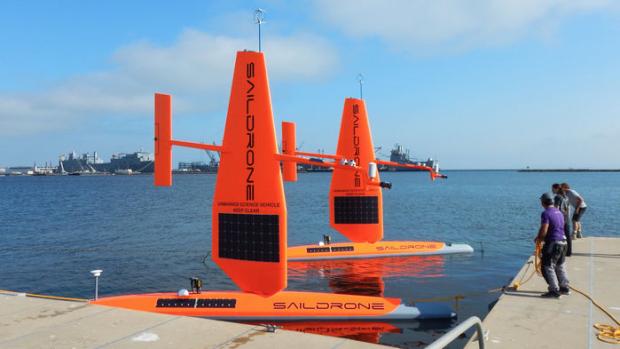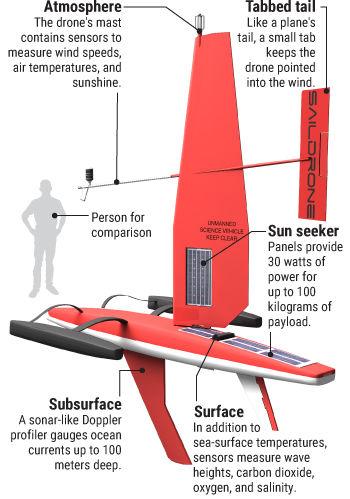Experimental Maritime Surface Drones Look for Signs of El Niño
Submitted by tatwood on Sun, 03/11/2018 - 12:18


"We could be making the next epochal advancement in oceanography," says Craig McLean, NOAA's assistant administrator for oceanic and atmospheric research and acting chief scientist. As noted by Sciencemag.org, it was not all smooth sailing. At the equator, the drones were temporarily stuck in a “wind dead zone.” Another prototype with a larger sail will depart for the equator in July to see if it can better negotiate what has been called “the doldrums,” where there is minimal wind.
A discovery made in the first trip was that water temperature could vary by 1° in less than a kilometer. Buoys and Satellites are unable to detect this kind of information, the measurement of which is another example of the advantages of the new Saildrone tech.
